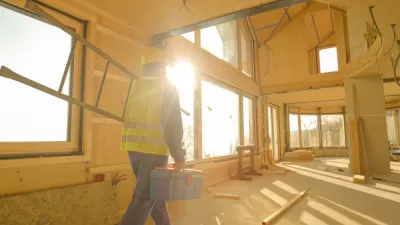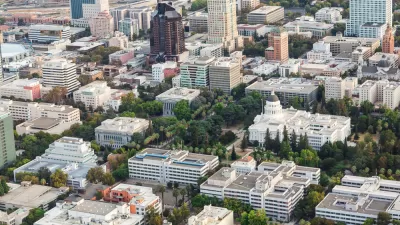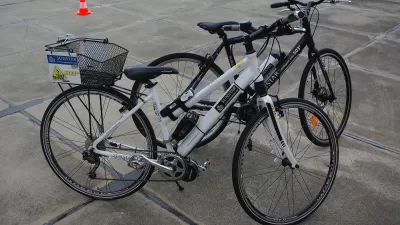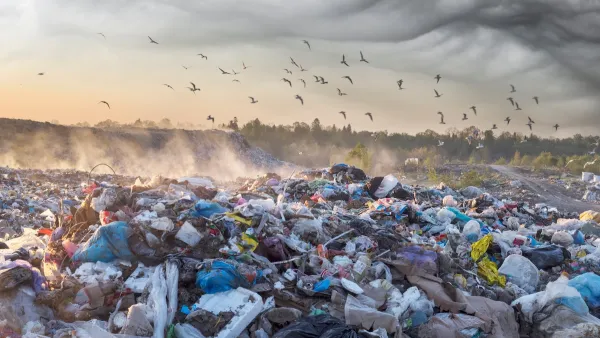Every component of a building, from the concrete foundation to the paint on the walls, has an impact on human health, the climate, and ecosystems around the globe. Building materials—once overlooked in real estate’s sustainability efforts—are now bei

Every component of a building, from the concrete foundation to the paint on the walls, has an impact on human health, the climate, and ecosystems around the globe. Building materials—once overlooked in real estate’s sustainability efforts—are now being recognized as key to achieving net zero carbon emission targets and delivering healthy places for tenants and communities.
For First United Bank, a regional bank headquartered in Durant, Oklahoma, choosing the right construction materials for its new branch locations became an important way for the company to outwardly express its people- and planet-focused values.
“First United wanted the buildings to integrate and showcase sustainable strategies while inspiring and relating to their customer base,” according to project architect, Taylor Coleman, a senior associate at Gensler. “Using mass timber proved to be an excellent way to achieve these goals.”
The inviting, light-filled lobby of First United Bank’s branch in Fredericksburg, Texas, is characterized by wood—lots of it. Completed in 2019, the 8,500-square-foot (790 sq m) building was the first fully mass timber structure in the state and the first project in the country to use cross-laminated timber (CLT) panels made from southern yellow pine, a locally grown and sourced wood.
Compared with traditional materials like concrete and steel, mass timber has a much lower environmental impact and has been shown to improve occupant health and well-being by evoking nature—a concept known as biophilia.
After completing the Fredericksburg branch, First United Bank and Gensler partnered on two additional mass timber bank buildings in Shawnee, Oklahoma, and Sherman, Texas. Gensler is now designing more than 2 million square feet (185,800 sq m) of mass timber buildings for Walmart’s new home office campus project in Bentonville, Arkansas, and working on Under Armour’s Baltimore global headquarters, another fully mass timber project.
These projects are representative of a larger industry trend favoring sustainable construction materials.
Over the last decade, this movement has mainly been championed by architecture and design firms, but real change will be possible only with coordinated efforts across the industry, says Diane Hoskins, Gensler’s co-CEO. “The decarbonization of the built environment is a complex challenge requiring the entire real estate sector to move toward low-carbon solutions.”
Spurred by increasingly restrictive regulations, reporting requirements, and growing demands from investors and tenants, the industry’s sustainability efforts are now taking materials into account.
An upcoming ULI report, The Material Movement: Creating Value with Better Building Materials, outlines the driving forces behind this shift and highlights key steps that developers and asset managers can take to mitigate their environmental impact and enhance health through building materials
FULL STORY: The Materials Movement: Advancing Low-Carbon, Healthy Materials for Sustainable Communities (ULI)

Maui's Vacation Rental Debate Turns Ugly
Verbal attacks, misinformation campaigns and fistfights plague a high-stakes debate to convert thousands of vacation rentals into long-term housing.

Planetizen Federal Action Tracker
A weekly monitor of how Trump’s orders and actions are impacting planners and planning in America.

San Francisco Suspends Traffic Calming Amidst Record Deaths
Citing “a challenging fiscal landscape,” the city will cease the program on the heels of 42 traffic deaths, including 24 pedestrians.

Defunct Pittsburgh Power Plant to Become Residential Tower
A decommissioned steam heat plant will be redeveloped into almost 100 affordable housing units.

Trump Prompts Restructuring of Transportation Research Board in “Unprecedented Overreach”
The TRB has eliminated more than half of its committees including those focused on climate, equity, and cities.

Amtrak Rolls Out New Orleans to Alabama “Mardi Gras” Train
The new service will operate morning and evening departures between Mobile and New Orleans.
Urban Design for Planners 1: Software Tools
This six-course series explores essential urban design concepts using open source software and equips planners with the tools they need to participate fully in the urban design process.
Planning for Universal Design
Learn the tools for implementing Universal Design in planning regulations.
Heyer Gruel & Associates PA
JM Goldson LLC
Custer County Colorado
City of Camden Redevelopment Agency
City of Astoria
Transportation Research & Education Center (TREC) at Portland State University
Jefferson Parish Government
Camden Redevelopment Agency
City of Claremont





























